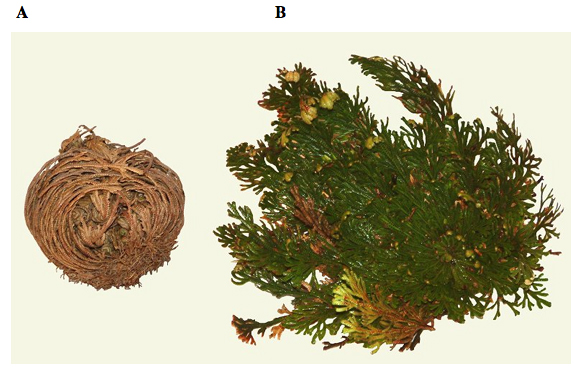- Resurrection plant Haberlea rhodopensis develops molecules to survive drought stress. These molecules allow the plant to resurge from a desiccation state. We have extracted a specific fraction from the plant (Haberlea extract) and found it rich, among other molecules, of a caffeoyl phenylethanoid glycoside called myconoside, a molecule extremely abundant in the plant with a potential role in survival. Peroxide-stressed normal human dermal fibroblasts treated with the Haberlea extract, showed increased collagen VI (+822%), collagen XVI (+928%) and elastin (+144%) mRNA synthesis, measured by RT-qPCR. This effect was superior to those obtained with benchmarks retinoic acid and retinol. When used at 3% in human skin biopsies, Haberlea extract protected against UV-induced dermis oxidation by 100% (P < 0.01), as evidenced by immunohistochemistry. Finally, when tested in human volunteers (n = 20) at 3% in a cream against a placebo, Haberlea extract increased skin elasticity (3× placebo, P < 0.0002) and skin radiance (4× placebo, P < 0.05) after only 15 days of treatment, with the effect sustained after 30 and 60 days of treatment. We demonstrated that by using Haberlea extract (particularly rich in glycoside myconoside), it is possible to strongly stimulate antioxidant skin defences and extracellular matrix protein synthesis. This effect, in turn, will further stimulate skin elasticity and skin radiance significantly in human volunteers. The extract can be suggested for anti-ageing treatments, intended for claims such as protection from oxidation, increased skin elasticity and enhanced skin radiance.
References
Source: Int J Cosmet Sci. 2012 Apr;34(2):132-9. doi: 10.1111/j.1468-2494.2011.00692.x. Epub 2011 Nov 15.
“Skin benefits of a myconoside-rich extract from resurrection plant Haberlea rhodopensis.”
Dell’Acqua G1, Schweikert K.
www.ncbi.nlm.nih.gov/pubmed/22023081

